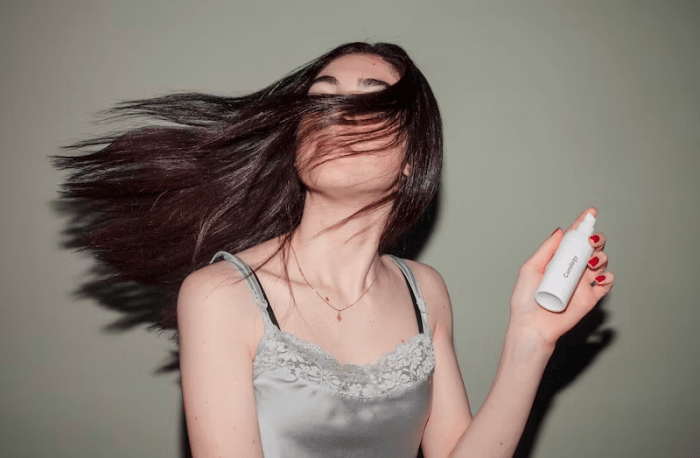Do Chemical Hair Straighteners Pose Health Risks?
FTC Statement: Reviewers are frequently provided by the publisher/production company with a copy of the material being reviewed.The opinions published are solely those of the respective reviewers and may not reflect the opinions of CriticalBlast.com or its management.
As an Amazon Associate, we earn from qualifying purchases. (This is a legal requirement, as apparently some sites advertise for Amazon for free. Yes, that's sarcasm.)

In the quest for smoother, straighter hair, chemical hair straighteners have become a popular choice. These products work by altering the natural bonds in keratin, the protein responsible for hair curls.
The hair undergoes a structural change by breaking these bonds, transitioning from curly to straight. While the appeal of a new hairstyle is evident, a more pragmatic question emerges: do these chemical processes harbor potential health risks? Let us dive deeper.
What are Chemical Hair Straighteners?
Chemical hair straighteners are formulations, either lotions or creams, designed to alter the protein structure of curly hair, resulting in a permanent straightening effect. In contrast to methods like heat or serum straightening, chemically treated hair remains straight until new growth occurs.
Typically administered by professional stylists in salons due to the potential risks associated with the involved chemicals, there are also at-home kits available. However, these DIY options often feature milder formulas that may be less effective. It's important to note that chemical hair straighteners contain potent substances that can lead to hair damage and scalp irritation over time.
Some chemicals commonly used include cyclosiloxanes, formaldehyde, parabens, diethanolamine, sodium hydroxide, phthalates, triclosan, and benzophenone-3. The California Department of Toxic Substances Control has highlighted potential risks associated with exposure to these substances.
Research has indicated a correlation between these chemicals and an elevated risk of health issues such as cancer, fibroids, and endometriosis.
Study Links Chemicals in Hair Straightening Products to Higher Risk of Cancer
According to an NIH study, women who regularly used chemical hair straightening treatments had a higher chance of developing uterine cancer. The researchers analyzed data from over 33,000 women participating in the Sister Study. During an 11-year follow-up period, they identified 378 cases of uterine cancer diagnoses.
Women who stated that they used hair straighteners more than four times in the preceding year were more than twice as likely to develop uterine cancer.
Notably, in the study, approximately 60% of frequent hair straightener users were Black women. This finding is particularly relevant for Black women since they tend to use these products more often and at younger ages.
No other hair products like dyes, bleaches, or perms showed a significant association with uterine cancer risk. The study did not identify specific brands but certain chemicals commonly found in straighteners, such as parabens, BPA, metals, and formaldehyde, may contribute to the higher risk. Further absorption of these chemicals could occur through scalp burns or lesions caused by the products.
Additional studies are still required to validate the findings in different groups of people and identify which specific components could be contributing to the observed relationship.
Nevertheless, these results warrant concern about the regular use of hair straightening products containing chemical treatments and a potential increased risk of uterine cancer development. More investigation is important to understand this association and inform safety guidelines fully.
Lawsuits Against Chemical Hair Straighteners
People in the USA are filing a hair straightener cancer lawsuit to take legal action related to chemical hair straighteners. They claim that using these products increases the risk of certain cancers, making manufacturers responsible. Women diagnosed with uterine, endometrial, or ovarian cancer after using straighteners may be eligible to file lawsuits.
According to TorHoerman Law, this surge in litigation began after a 2022 NIH study linking straightener use to higher uterine cancer risk. The research found women using them over four times per year had more than double the uterine cancer risk.
Other studies also tied straighteners to elevated risks of uterine fibroids, endometriosis, and breast cancer. Given these health concerns, people have pursued legal proceedings against manufacturers to hold them accountable for the alleged risks associated with chemical hair straighteners.
Alternatives to Chemical Hair Straighteners
There has been growing interest in natural hair styling alternatives instead of chemical straighteners. This is because of worries over studies linking certain straightening products to higher risks of uterine cancer. A few examples include:
Blow drying with cool air can help smooth hair from root to tip while protecting it from heat damage. Maintain a 6-inch distance and continuously move the dryer. Wrapping sections of hair around rollers or pins before securing with a scarf is another approach.
Chemical-free hair care products like shampoos, conditioners and leave-in treatments containing keratin can also help achieve straight styles. Hair masks made with ingredients like oils, avocados, or yogurt offer nourishment and straightening effects.
Applying oils with smoothening properties, such as coconut, argan, or macadamia nut oil, provides hydration while adding shine and softness to hair. An electric flat iron can straighten hair but should be used sparingly to prevent breakage or over-drying.
Combining these natural methods with protective hair treatments helps preserve hair health. It's important to accept hair in its natural texture as well and avoid over-manipulation that could lead to damage or loss. With some experimentation, chemical-free options can effectively straighten hair without compromising well-being.
In conclusion, while chemical hair straighteners can effectively alter hair texture, recent studies have uncovered potential health risks associated with their use. Given evidence linking several ingredients in these products to higher cancer rates, some individuals are pursuing legal action against manufacturers.
As a result, many are seeking out safer alternative hair straightening methods that avoid risky chemicals. With non-permanent options continuing to improve, it is possible to achieve straight styles without compromising health.


